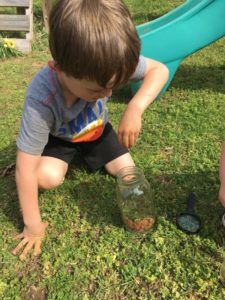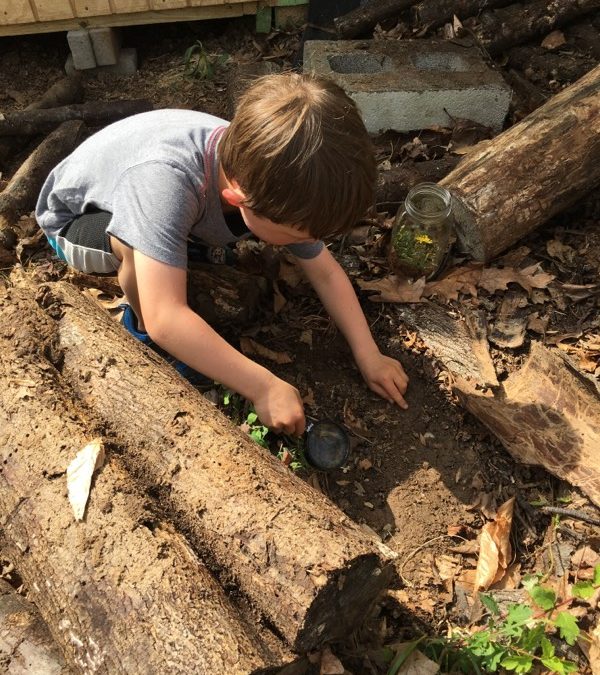April is the month of NC SciFest, and these sunny days are a great time for a little outdoor exploring!
Materials needed:
- Container for habitat (mason jar, plastic container, etc,)
- Magnifying glass (optional,)
- Paper and drawing supplies (optional)

Steps:
- Before you begin your bug hunt, think about where you’ll be looking and what kind of insects or bugs you might find there. By doing this, you’re thinking like a scientist and making a hypothesis or a guess about something using the information you already know!.
- Outside, choose your exploring area. Is the space covered in grass or dirt? Are there any trees nearby, leaves, sticks, or fallen branches on the ground? Where might a certain kind of insect or bug choose to live? An insect’s habitat or home is the place that has all the things an animal needs to survive like food, water, protection from bad weather or from other animals that could hurt it. In your container, build your own insect habitat! What sorts of nature items should you include?
- Now it’s time to hunt! Look closely in the dirt and grass, under logs, on trees, in pavement cracks, or anywhere else you think insects and bugs may be. If you have a magnifying glass, use it to get a closer look, but remember that we’re in their habitat now, so keep a respectful distance. It’s best to leave bugs where we find them! It’s important for us to be good protectors of animal habitats because they provide important materials and benefits for humans too.
- While hunting, you may find an insect’s exoskeleton, an empty shell casing from an insect. Insects are invertebrates, which means that instead of having bones inside their body, they have a skeleton on the outside of their body! Exoskeletons can’t get bigger as an animal grows, so in the same way that you need bigger clothes as you grow, animals with exoskeletons molt them: They shed their old one and a new one forms as the animal grows larger. You can collect any exoskeleton molts you find in your habitat container.
- Insects also have a life cycle, different stages of growth they go through. Some insects like butterflies and moths spend time inside a chrysalis or cocoon, which is a protective covering during one of their growth stages. Cocoons look like tiny shells or pods, but since it’s hard to tell if one is empty, it’s best to just take a close look and leave it where you find it.
- When your hunt is over, think back about your hypothesis before you started: Did you find the insects and bugs that you thought you would, or were there surprises along the way? For an extra activity, create a Bug Journal about your hunt using paper and markers/crayons to draw or write about the insects and habitats you made and found!
Kaleideum would love to see pictures of some of the insects you find in your backyard! Tag us on Facebook and Instagram with your photos!


Recent Comments